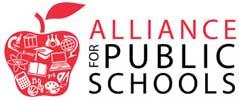The Tampa Bay Times has endorsed the school referendum on the ballot in Hillsborough County in November. They followed up with a column on why voters should pass the referendum:
The Hillsborough County school tax on the Nov. 6 ballot is a smart, necessary investment in the nation’s eighth-largest school system. The 10-year, half-penny sales tax would create stronger, safer schools and a healthier learning environment for more than 215,000 children. Yet wavering voters are struggling with reasonable questions.
Why should voters without children in the school system pay more? Why should local taxpayers get state lawmakers off the hook for repairs that should be funded from Tallahassee? Can the school system be trusted? These are relevant concerns influencing the decision for many voters. Here are some answers.
I don’t have kids in the system, so why should I pay? Every parent or grandparent has probably heard the horror stories. A crisis with the district’s air conditioning systems has forced students and teachers to go home sick, damaged classrooms and destroyed equipment. With temperatures pushing into the 90s, students and staff alike suffered in classrooms – sweating, distracted, annoyed. The environment is unhealthy; the situation is unsustainable. In the first nine days of this school year, a staggering 1,533 requests poured in to fix air conditioners, temporary chillers, water fountains and water cooling units. And as bad as the air conditioning systems are, they are only one sign of the wear and tear across 230 schools from a billion-dollar backlog in maintenance.
Parents obviously have a vested stake in ensuring classrooms are conducive to learning. But those without children enrolled also are affected by the quality of the local public schools, the single-biggest gateway for children into adulthood. The state of a community’s school system is a leading indicator of its quality of life. Experts point to schools and transportation as the top two considerations for newcomers and businesses looking to relocate. Quality schools produce a talented workforce for local employers in an ever-evolving economy. Schools define their neighborhoods, affecting the real estate and retail markets. School facilities also perform vital public services across the growing region – acting as hurricane shelters and hosting major athletic and cultural events. Maintaining public assets worth billions of dollars that help drive the economy only makes sense.
Isn’t this a state responsibility? It is – but the governor and Legislature have failed for years to adequately fund education, and local communities are being forced to act. Already, nineteen of Florida’s 67 counties levy an additional half-cent sales tax for school capital needs, while others – including Pinellas – have committed additional property taxes for school operations. Voters have embraced public education as a priority even if their elected state leaders have not.
This plan gets money into the pipeline quickly to address the biggest needs, from air conditioners to roofs. And its 10-year timeline gives voters a chance to make immediate fixes as they elect new lawmakers at the state level. For Hillsborough alone, the state’s reduction in capital money for buildings and equipment has cost $407 million over the past decade.
How can we trust the school district? The plan is clearly aimed at specific projects the district has wanted to tackle for years. Virtually all of the money goes to deferred maintenance – not for building new schools. Of the $131 million raised annually, about half would go for air conditioning systems. The second-biggest chunk would pay for roofs. At least $500,000 would be spent on every campus – for everything from flooring and plumbing to fire alarms and new electric systems. A school-by-school list of projects is available at sdhc.k12.fl.us.
The plan spreads the money fairly, in a transparent way, to longstanding needs. Strict rules limit the ability of privately run charter schools to tap the fund. And an independent oversight committee would ensure the money is spent appropriately. Under state law, all records and meetings involved with this program are open to the public. Voters can also hold the seven-member, locally elected School Board accountable for keeping the projects, spending and timetable on track.






